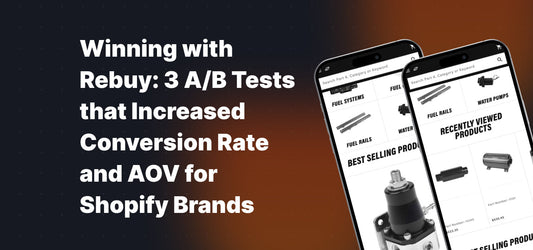Table of Contents
Get useful eCommerce stuff
Why Is Search Important For User Experience?
One of the seven core UX factors is findability and it refers to users being able to easily find information within a digital product. In eCommerce stores, especially with large inventories, the search function helps customers find products, articles, FAQs, or other content.
What is the purpose of Search in UX?
It's a backup for navigation
If your website has a large inventory of products, the navigation can get complex, and sometimes looking for what you need by clicking around can be challenging. Using navigation this way can also be difficult if the navigation itself is simply not structured in an optimal way.
The search function can be a way for users to escape the complexity of navigation and get straight to the point and do it quickly.
Mobile users love it
The downside of extensive navigation is that it's difficult to use on mobile. On top of that, mobile users are often on the go, not sitting by their desks. The search function is something that can be used quickly and directly on mobile devices.

Damn Filters, one of our clients, has a prominent search function that helps mobile users find exactly what they need very quickly.
People are used to searching
In the era of information, where a certain company whose main product is a search engine is a leading tech giant, people are used to searching. Young adults today grew up with Google around. That means that this new generation of customers has always been able to search for anything on the web just by typing it in the search box. Allowing your customers to access information on your site just like they do on Google will match up with this habit perfectly.
3 Tips To Improve Your Search Functionality
1) Make it easy to find
The first step to making your Search usable is positioning it on the site. From our experience we can confidently say that the best place for search in an online store is within the header. This will ensure that your users can access it from anywhere on the page.

Ikea’s search is extremely easy to find in the header navigation.
2) Use suggestions
It's useful to implement autofill in your search just like the one on Google's homepage. If customers aren't familiar with your inventory, suggestions that show up as they type will give them an idea as to what they might find under a given phrase, like different colours, models, variants, etc. Also, if a user knows exactly what they need, they can use the suggestions to get directly to the product they are after just by typing some keyword(s).
King Kong, one of our clients, suggests collections and products as you type.
3) Remember about results page
After people press enter on the search, they might end up on a page with a lot of different results like Products, Blogs, Collections, Profiles, etc. It's important to design it in a way that it's useful and accessible. There are 3 must haves that we recommend looking into when designing a results page:
Organise the results - Often different types of results need to be displayed differently. Make sure to think about what you want to display in your search and prepare different layouts for different results. It's worth grouping results in tabs or separate headings.
It's basically a collection page - Try thinking about the results page as a collection page. Filtering and sorting will help users navigate through their results efficiently and the pagination or [Load more] button can speed up the page.
There can be no results to be found - What will happen if there is nothing to be shown? It's important to at least display a short message in place of search results that lets users know there is nothing to be found under their phrase.

Argos’s search results page is very user friendly with filters, sorting and a great layout.
Our Thoughts On Navigation in User Experience
Findability is one of the 7 core UX factors. In eCommerce stores, the search function allows users to quickly find any content they may be interested in. There are many advantages of having a search function in your store. For example, it's faster than navigation, more helpful for mobile users than navigation, and people are used to it.
It's important to design it so the search box is easily accessible from anywhere on the site, just like navigation. It's a good idea to also implement suggestions, as they help users get an overall idea of what the results will be. The results page should never be ignored and can be thought of as a collection page where results are neatly grouped into categories. Users should be able to sort, filter, see how many results there are, etc.
If you enjoyed learning about the importance of search and want more User Experience insights keep out our most recent blog on, Offering more than just a Store.
Sign-up for our newsletter today and keep up to date with our Shopify Industry Insights!
About the author









